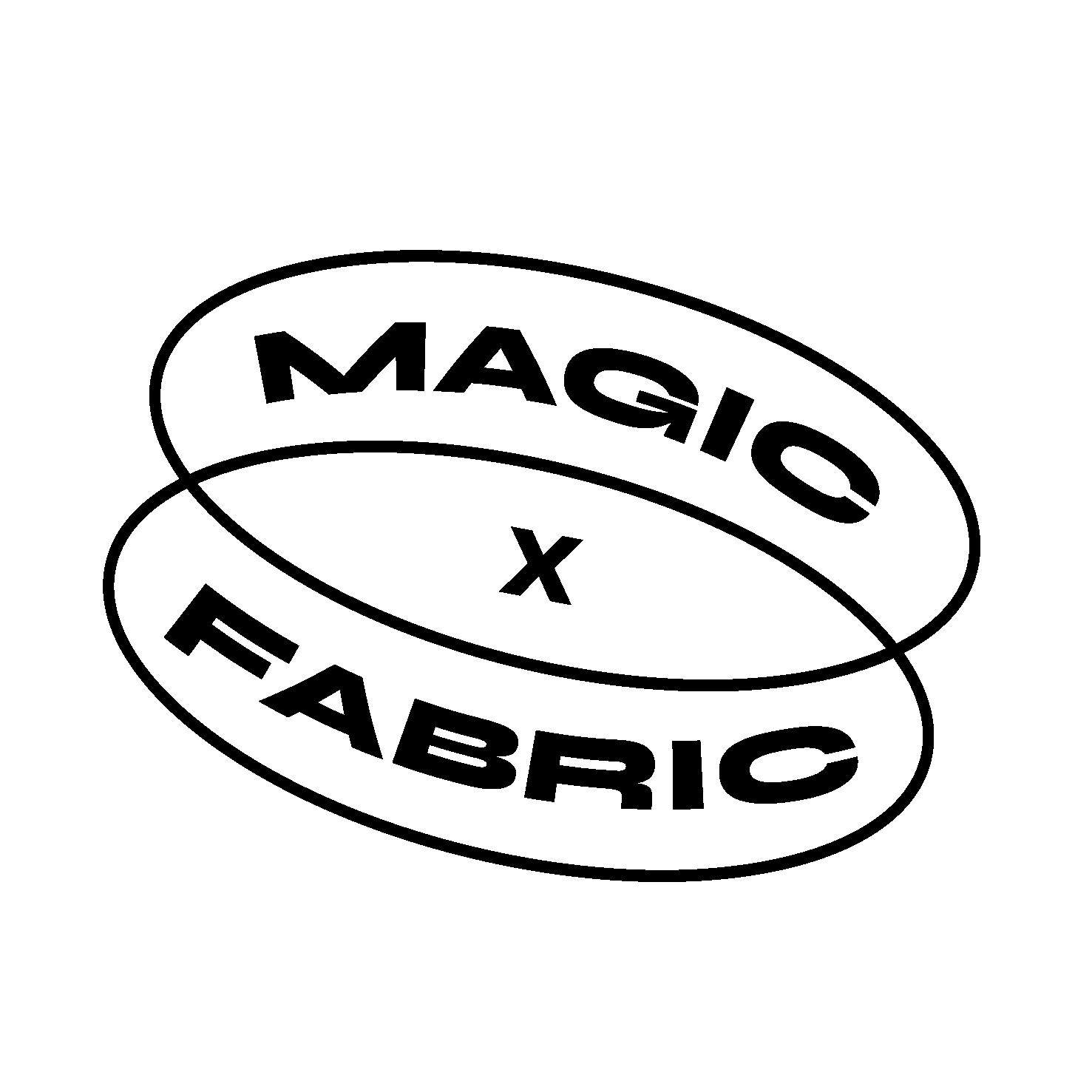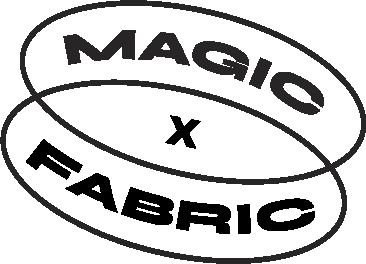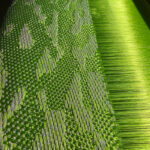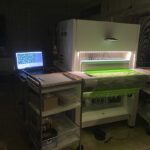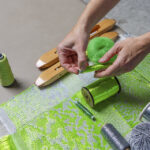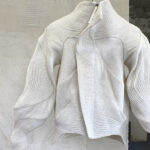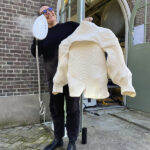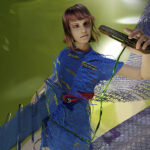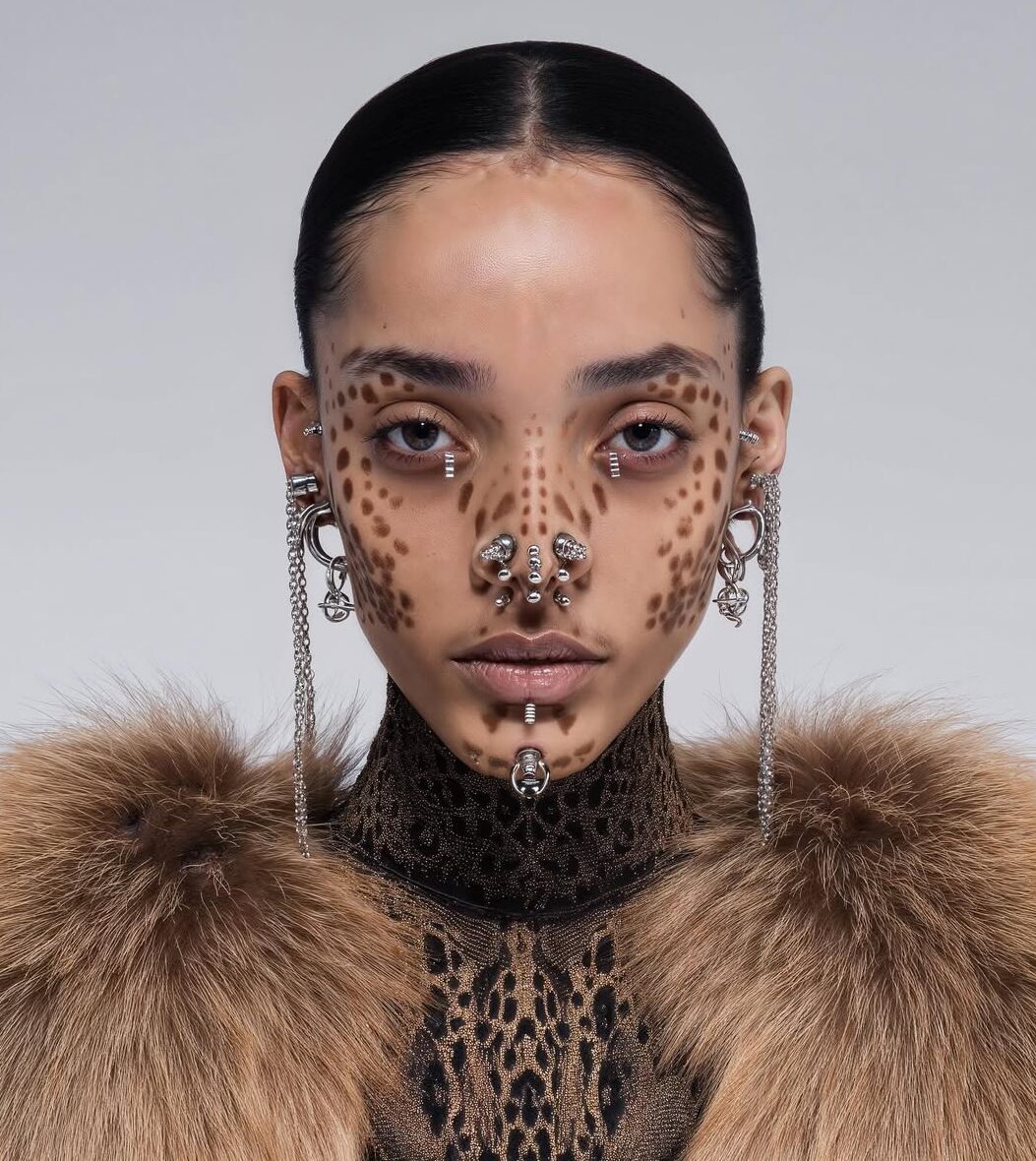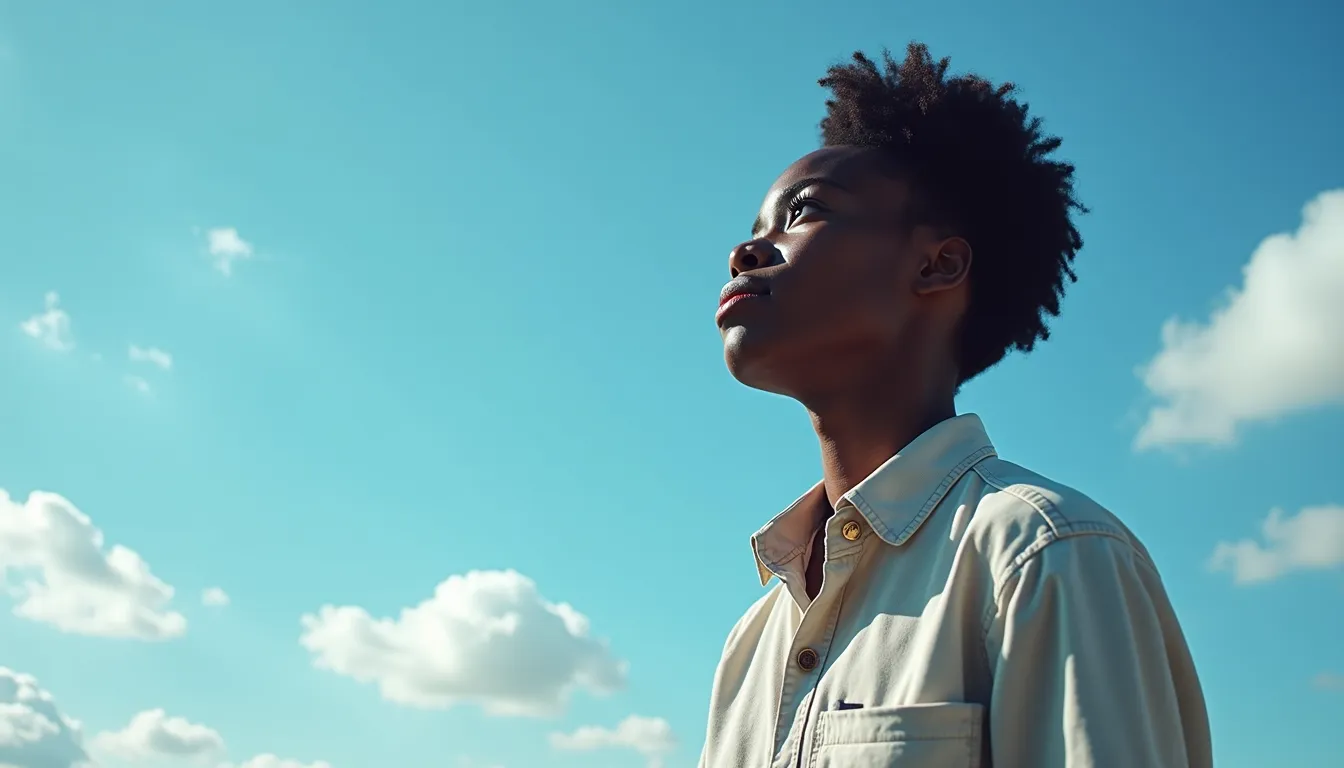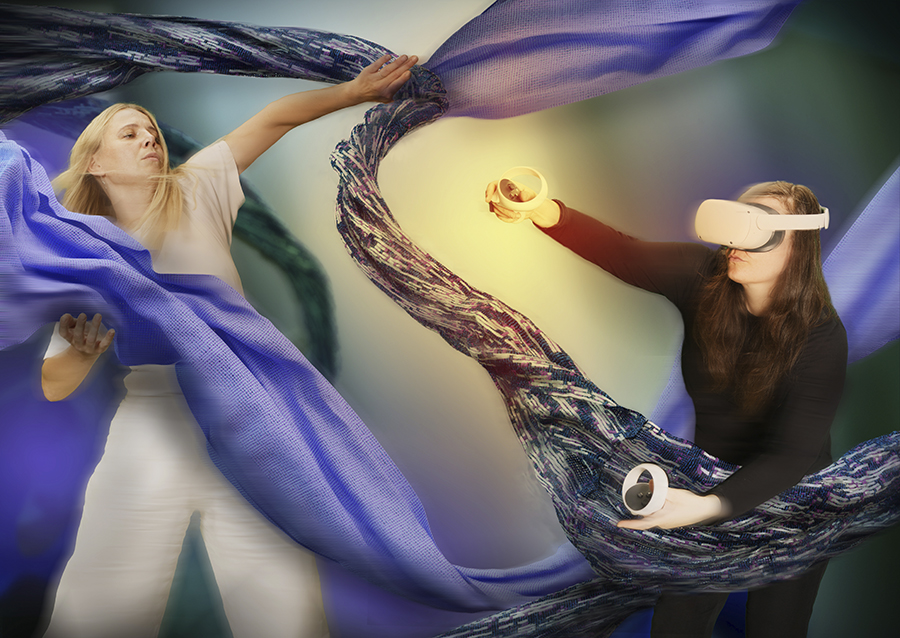
Crafting Magic with Augmented Weaving
In a future where new technology reigns and physical products become luxuries, the role of craftsmanship and traditional craft techniques begs an important question: will they survive? Can they evolve, rather than be relegated to museum artifacts of the past? Creative duo Augmented Weaving, based in the Netherlands envisions a future where the digital realm becomes a boundless playground while the creation of physical objects becomes rare and esteemed. In their work, they are exploring physical, digital, and virtual tools in fabric and textile shape creation.
In your vision of the future, where new technology dominates and physical products are a luxury, how do you see the role of craftsmanship and traditional craft techniques? Will they at all exist?
– Of course! We want them to continue to exist! It is part of our mission to keep traditional craft techniques alive and to pass them on to future generations. Alive – means constantly evolving instead of ending up in a museum as an artifact of the past. Crafts need to adapt to today’s needs to become future-proof. Some of them might shift to digital, some might get enhanced and therefore get more value and appreciation.
How did you start out learning digital tools and software? Were they a part of your education programs or knowledge you acquired on your own?
– At the time we studied digital methods were just about to be introduced, but novel tools and the possibilities they offer have always been a great inspiration for us. Our pursuit of knowledge never stops and there are constant developments to keep up with. Therefore in 2021, we did a two-week Clo3D summer boot camp at AMFI Amsterdam and continue to learn by practicing and experimenting. We are very thankful for the help of many extraordinary people sharing their knowledge online and for the exchange with other creators.
What challenges did you face when trying to bridge the gap between physical weaving and digital tools?
– We approach our work with an experimental mindset. Playing and combining these tools is a lot of fun and comes naturally to us. You face challenges the moment you want to bring something to perfection and make it production ready. Augmented Weaving is all about prototyping. Flaws, imperfections and challenges are welcomed as opportunities for development and continuation.
The educational systems may not always keep up with the rapid pace of digital transformation. What steps do you think they need to take to better equip students with the skills needed in the new digital landscape?
– The discipline of Fashion & Textile Design is already a massive package and adding digital or virtual tools can become overwhelming. Although, we believe that it is necessary to teach students to navigate both the physical and digital realms from the very beginning. To enable them to keep an open mindset and break down walls that prevent them from experimenting. While changing entire curriculums takes time, offering short and intense introduction courses allows students to acquire relevant skills to take off and tinker with new possibilities. Including external experts is extremely valuable and lets students learn from the real-life experiences of others.
Are there any initiatives or platforms that you recommend for creators interested in learning how to work with digital fashion and textiles? How should one start out as a complete newbie?
– Commit yourself to continuous learning. Clo3D offers many short boot camps where you acquire the basics. Or dive into the virtual realm to start creating with Gravity Sketch, an incredibly intuitive piece of software that makes 3D modeling feasible. Also don’t overwhelm yourself with learning too many softwares at the same time, but slowly build up your tool belt and become a master of your own workflows. When it comes to platforms, it definitely helps to join some communities where you find like-minded people, like The Fabricant, The Alana Project initiated by Stella Achenbach, Jessica James, Artisant or Stephy Fung, just to name a few…
Your work is transitioning between physical and digital realities, such as your collaboration with the Fabricant digital fashion studio. Will you continue to explore the phygital landscape, or do you see your work extending into the realm of digital-only experiences as well?
– Our work will always operate at the intersection of physical and digital sometimes more on one sometimes more on the other side.
We often think of craftsmanship as a deeply human endeavor. With the rise of artificial intelligence and automation, how do you see the role of human touch and imperfections evolving in this context?
– Craft mastery traditionally aimed at perfection in tools and techniques. In our work digital instruments and artificial intelligence are tools as any others. They are our helpers and partners. Now that machines and software are more accurate than us, we can allow ourselves to be more human in our impulses. Human touch irregularity has become a sign of quality. It is interesting to watch how this inspires the aesthetics of both hand-crafted and machine-made objects.
Considering the growing concern for sustainability and environmental impact, how do you see augmented weaving contributing to a more sustainable future in the realm of textile production?
– Our goal is to increase awareness and appreciation for craft and craftsmanship, physical and digital. Outsourcing production processes to low-income countries, out of sight, we are completely disconnected from how things are grown or made whether it is food or clothing. Textiles have become cheap, too cheap. There is a big mismatch between the money prize and the actual environmental impact of our consumption. At Augmented Weaving we envision a future where the digital realm is a boundless playground, while the creation of physical objects becomes rare and the ultimate luxury. We have to produce not only less but also better. Teaching and practicing physical and digital crafts can help us experience and understand how much it actually takes to make something and therefore appreciate it more. It is of importance to us to combine the two worlds so that they can learn from each other and evolve towards new workflows and reduction of waste, but also consumption.
If you could collaborate with any other artist, designer, or technologist in the world, who would it be and why?
– Our interests are so broad and we have a long list of people we find interesting or fascinating. Some researchers, writers, crafters, musicians, artists, architects, and so on. Somehow lately the Dutch Illusionist Hans Klok keeps appearing in our conversations. It started as a joke, but after watching a few interviews, we found him surprisingly funny and down to earth. As we love the pleasure of being fooled and intrigued by what’s real and what isn’t, we think we could have a lot of fun together!

Anita Michaluszko & Flavia Bon
You might also want to read:
